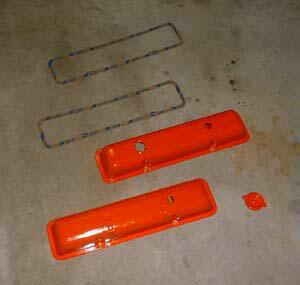
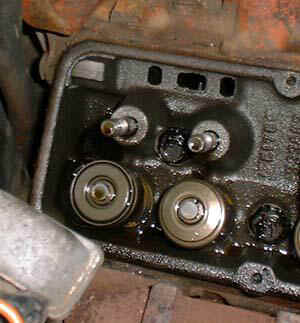
Compress the valve springs and remove the valve spring keepers. To remove the springs, gently tap on the side of the springs until they come free. Use your free hand to shield the spring to prevent the spring and components from flying across the room when they release.
Once you remove the springs, you can wrap a rubber band around each valve stem to hold it in place and remove the air pressure from the cylinder if you desire.
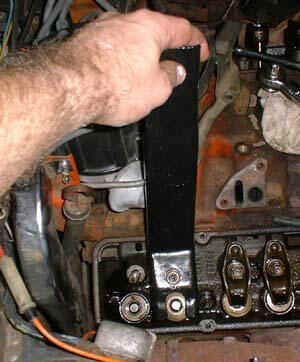

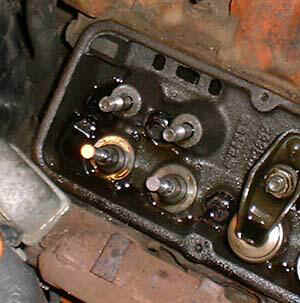

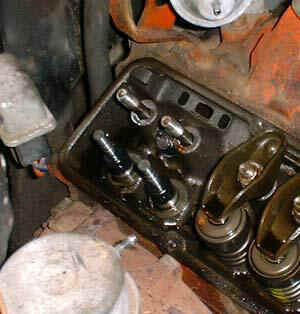
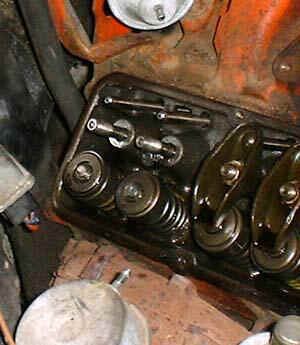
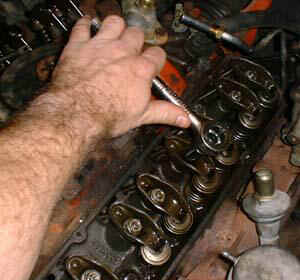
- Bring the #1 cylinder to top dead center on the compression stroke by turning the crank clockwise until the line on damper is aligned with the 0 on the timing plate. Verify the position by removing the distributor cap and verifying the rotor is pointing to cylinder #1. If it isn't, then turn the crank 360 degrees.
- Tighten the rocker arm nut until all lash is removed.
- To check the valve lash, rotate the pushrod with your fingers. When the valve lash is removed, you will feel a slight drag while turning the push rod.
- Turn each rocker nut 360 degrees once all valve lash is removed.
- Perform the procedure on the next cylinder. Turn the crank 90 degrees and repeat the procedures above substituting the next cylinder in the firing order: 1-8-4-3-6-5-7-2

